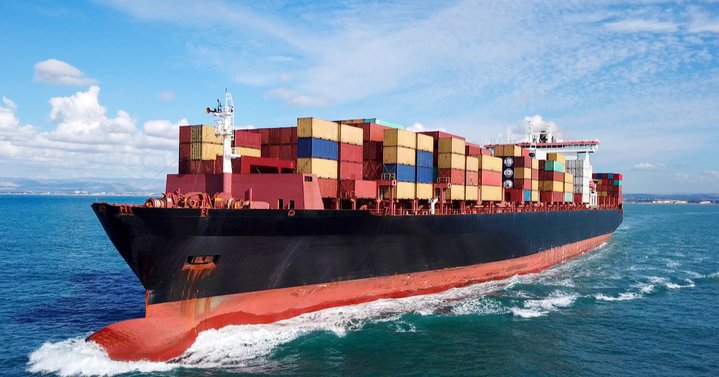
For anyone working in supply chain, logistics, or transportation, the past 18 months have been interesting, to say the least. Once an underappreciated and behind-the-scenes role in consumers’ minds, supply chain has been launched into the spotlight in the mainstream media recently. (As The New York Times admitted, “We didn’t even have a logistics beat before the pandemic. Now we do.”) What started in headlines as a disruption has eroded into a full-blown supply chain crisis, a result of the “unprecedented times” we’ve been facing since the arrival of COVID-19 — but the reality is not so bleak, nor so simple.
In order to fully understand how we got here we must take a closer look and examine the many factors that influenced the current supply chain situation. A looming economic recession, unpredictable consumer habits, production and shipping delays, staffing issues, and outdated transportation infrastructure all play a crucial and significant role in the crisis at hand, and only by understanding them can we track the way out. In this article we take a look at the events that unfolded to create the current supply chain environment, general ocean market freight trends, and explore potential solutions to navigate the short-term and prepare for long-term recovery and success.
Timeline of State of Ocean Freight Market
It is undeniable that COVID-19 has put tremendous strain on transportation and the global supply chain, but to start our timeline at the onset of the pandemic would be a slight oversimplification. While the U.S. economy saw substantial growth under the Trump administration in 2017-2018, the following year fell slightly short. Throughout 2019 a trade war with China seemed imminent, investments slowed, and many businesses — spurred by the growth of previous years — were faced with oversupply. U.S. industrial growth tracked negative throughout 2019 and the country braced for potential recession. Within the supply chain, transportation rates remained stable and, outside of catastrophic weather events, generally followed the expected seasonal trajectory. While some worried about recession, surely nobody was prepared for what 2020 had in store.
January 9, 2020, marks the first mention of the novel 2019 coronavirus (COVID-19) by the World Health Organization (WHO), after 59 cases were identified in Wuhan, China. Within weeks the region surged to over 300 cases and Wuhan and nearby Huanggang, with a combined population of over 18 million, were placed under strict quarantine. COVID-19 and resulting lockdowns continued to spread worldwide, and on March 19, California, which accounts for nearly 15% of U.S. GDP and is home to the country’s busiest ports, issued a statewide stay-at-home order. The order exempted “essential critical sectors,” including many in manufacturing and transportation, but it seemed clear that a nationwide lockdown was unavoidable and companies began cancelling orders and furloughing employees.
The sudden lack of job security created a dramatic drop in consumer spending, and consequently a drop in domestic freight rates, as demand was low and trans-Pacific imports from Asia had been halted almost entirely. Despite an overall drop in spending, March 2020 also saw the emergence of pandemic-induced panic-buying, with consumers flooding supermarkets to stockpile goods on a scale not seen since the Y2K scare in 1999. Canned goods, meat, hand sanitizer, and toilet paper were the hottest commodities, and distributors and stores struggled to keep up with the sudden increase in demand, adding another layer of complexity to a confused supply chain.
In late March, the U.S. government approved an astounding $2 trillion economic relief bill, which included small business loans, extended unemployment insurance, and provided direct stimulus payments to Americans, in order to ease the financial strain caused by the pandemic and keep the economy afloat. As stimulus checks hit accounts in April, spending also increased, but patterns were very different than they were pre-pandemic. Unable to spend money on usual services like restaurants, salons, or travel, Americans shifted to spending on goods and products. Suddenly stuck at home for the foreseeable future, consumers began furnishing home offices and gyms, remodeling outdated spaces, purchasing high-end electronics, and planning for domestic adventures with new outdoor equipment. Consequently, direct-to-consumer and e-commerce orders soared, outpacing 2019 sales by 32%.
Many of these high-demand manufactured goods are made, at least in part, in China – which accounts for almost 18% of all U.S. imports. When paired with the burgeoning backlog of containers routing to the U.S. from reopened Chinese ports, this sudden surge in demand marked the beginning of a container capacity crisis that has distorted supply chain operations for over 18 months.
By the fourth quarter of 2020 many shippers and importers began bracing themselves for an unparalleled peak season, as shipping delays and freight rates were increasing rapidly, while container capacity was becoming more constrained. Additionally, a second surge of COVID-19 cases impacted labor availability for ports, trucking companies, and warehouse facilities, further limiting the ability to keep product stocked on shelves and in distribution centers.
Unfortunately, the end of peak season and a new year did not provide any relief to supply chain woes. Volumes, and likewise freight rates, continued surging in the early months of 2021 and had many questioning how high rates could possibly go. March brought more bad news, as the enormous Ever Given ship became lodged in the Suez Canal for 6 days, delaying at least 400 other ships and interrupting billions of dollars in international trade. The summer months saw typhoons in China’s southern coast, COVID-related port closures across Asia, and increasing congestion in Los Angeles/Long Beach ports -- sending spot rates from Asia to the U.S. to $20,000 per 40 foot container, 10 times what it cost pre-pandemic.
Early October 2021 finally saw the first significant drop in rates out of China, as the country is currently facing a devastating energy shortage that has stalled much of their manufacturing. While the full impact of this most recent crisis is yet to be seen, it will surely create a new set of challenges within supply chains worldwide.
Understanding the Drivers of Demand & Freight Rates
Having outlined a general timeline of events that contributed to the current state of ocean freight, let’s dig deeper into the drivers of demand in supply chain over the past 18 months, how they impact one another, and how they dictated current ocean freight market trends.
- Backlogs of freight at Asian ports — think containers already loaded with goods before lockdown, that were unable to make the journey to final destinations due to COVID restrictions — were being dispatched and routed to the U.S. and Europe en masse.
- U.S. ports saw a sudden uptick in imports, and were quickly overwhelmed with the nonstop onslaught of incoming freight. Inland infrastructure struggled to keep up with import freight as well:
- Driver shortages: Well before the pandemic, the trucking industry was facing a staffing problem, as veteran drivers retired and companies struggled to recruit younger employees. The situation has only gotten worse, and the American Trucking Association recently announced the industry is short by 80,000 drivers, a 30% increase from 2019.
- Warehouse availability: With imports booming, warehouse facilities also became overwhelmed — not only in regard to physical space, but also with labor, which ultimately limited a facility’s operating hours to load and unload freight.
- Chassis shortages: Limited warehouse space and appointment availability meant containers remained on chassis longer, increasing drayage time and costs.
- Rail congestion: Extended chassis dwell times and a shortage of dray drivers led to congestion at rail terminals across the U.S., limiting the volumes that could be added to the system as ships were offloaded.
- As a result of the growing container imbalance, freight rates from Asia increased at an alarming speed. In August 2019 shipping a container from China to the U.S. West Coast cost $1,600, a year later that had nearly doubled to $3,150, and by August 2021 rates were topping $10,000 and beyond.
- Increasing rates soon extended beyond spot freight. Carriers and freight forwarders began renegotiating contracts with shippers as well, often reducing capacity commitments while increasing rates. This left shippers, both large and small, scrambling to secure additional capacity outside of their usual vendor networks, typically accepting dramatically higher rates than what was budgeted under contracts.
Changes in How the Industry Handles Container Shipping
Globalization has long been at the heart of supply chains. As the world became more connected through communications, goods, services, and technologies, companies found opportunities to be more efficient and cost-effective in manufacturing. Large steamships provided access to raw materials from around the world and created a competitive marketplace for sourcing. Additionally, manufacturing of everything from automobiles and electronics to toys and gadgets could be done for a fraction of the price overseas, then inexpensively shipped around the world for distribution. The efficiencies of outsourcing and offshoring led to the development of leaner supply chains and just-in-time models of supply management. The current ocean freight crisis is challenging all of that, and forcing the industry to reconsider how they manage container shipping.
Fleet Growth & Container Orders to Add Capacity
Not surprisingly, a proposed solution to diminished capacity is to increase supply with more ships and more containers: 386 ships have been ordered so far this year, with delivery dates already scheduling into the year 2025. Container factories are also set to produce a record number of new containers to add to the global pool this year. It should be noted, however, that without improving infrastructure for ports and railways or addressing labor shortages, additional containers will do little to clear up the domestic U.S. backlog, and could potentially add to the problem.
Technology Implementation
Like in many other industries, technology is transforming the way container shipping is managed and streamlining operations in ocean freight. Emerging technologies help to eliminate manual processes, provide the ability to securely share data between parties, and improve transparency and visibility in transit. RFQs and spot freight auctions can be automated in TMS platforms, paper trails can be simplified with blockchain solutions, and containers can be tracked in real time with recent API developments. Digital freight marketplace platforms combine many of these technologies and provide solutions for both shippers with freight and carriers with available capacity — streamlining processes and maximizing efficiency in container shipping.
Reconsidering the Just-in-Time Supply Chain
Popularized by the likes of Toyota and Dell, the just-in-time supply chain method (JIT) is based on the concept of only moving materials as they’re needed for production, reducing the amount of stock (and therefore capital) sitting in warehouses. JIT requires a high level of specificity and synchronized processes, but offers the advantages of reduced warehouse costs and shorter production runs, making it a popular model for many manufacturers looking to reduce costs in their supply chains. Retailers like Walmart also recognized the benefits of JIT as applied to inventory management, and relies heavily on sales data and analytics to restock inventory just as it’s needed on shelves.
While JIT works well in stable environments, it crumbles under volatile conditions, as we’ve witnessed since the onset of the pandemic. Suddenly retailers struggled to meet chaotic demand for paper products and canned goods. Manufacturers were faced with a stalled supply chain and dwindling stock of materials -- particularly those that relied on a lean JIT model. As the ocean shipping market has continued its trend of unstable rates and unpredictable transit times, manufacturers are reconsidering JIT and searching for backup suppliers as they restock essential components in preparation for any future disruptions.
Diversifying Transportation Networks
When ocean freight rates began to skyrocket, freight forwarders and carriers began pushing back on shippers, renegotiating contracts, and turning down volumes on difficult trade lanes. Many shippers, who relied heavily on a small number of trusted forwarders to manage their ocean freight, were scrambling to find new transportation options and secure capacity in an extremely tight market. Just as they have had to reconsider suppliers and inventory management models, shippers are also recognizing the importance of a wider, more diverse network of transportation providers in order to mitigate risk in a volatile market.
Wrapping up 2021 — What to expect through EOY
While many headlines suggest a holiday season of empty shelves, industry experts are more optimistic and encourage consumers not to mourn a tragic, giftless holiday. Major retailers Walmart and Target have both chartered ships to ensure shelves stay stocked and are adamant that their efforts to circumvent the container crisis have been successful.
This assurance, however, did little to ease the challenges that small-to-medium businesses (SMB) faced. Smaller volumes, smaller margins, and smaller capital created a substantial hurdle for these companies, as they competed with enterprise businesses for limited ocean container capacity. Even the recent drop in freight rates from Asia came too late to be of any help to small shippers — considering the massive number of ships already waiting to be unloaded at U.S. ports, any containers not already in transit will likely miss the cutoff for holiday shoppers.
For shippers who have more flexibility for freight arriving in late December and into January, the current rate reductions should be a welcome, if fleeting, reprieve. There is still much speculation about how long the declines will last, considering the ongoing power crisis in China and lack of clarity on how that will impact trade and subsequent freight rates.
Looking into 2022-2023
While it would be wonderful to have a crystal ball to look into the years ahead and inform our supply chain decisions, we are unfortunately left only to speculate at what might the future may hold. Most industry leaders agree that the container shipping market will remain elevated through the end of 2022, as importers continue to work through backlogs and bottlenecks in the supply chain that have built up in the past 18 months. Additionally, the energy crisis and any potential resurgence of COVID-19 cases pose threats to production and shipping out of China, and elongate the path to recovery for supply chains.
Just as container capacity looks uncertain, the future of ocean freight rates is also unclear. The rather sharp decline in rates since early October could indicate that the rate boom is coming to an end, but more likely the decline is related to slowed holiday shipping and decreased production in China. While this could mean that rates are plateauing, the ongoing logjam of containers at busy ports like L.A. and Long Beach will prevent a full correction, and rates will undoubtedly remain much higher than pre-pandemic. With many questions still unanswered regarding the future of container shipping rates, we must consider how best to navigate the market in order to mitigate costs and risks.
How will Importers Navigate Ocean Freight & Container Shipping?
In times of uncertainty and unpredictability, importers must remain flexible and adaptable in order to successfully navigate ocean freight market trends. This may mean expanding provider networks to source capacity, utilizing advanced technology, and exploring trade financing options.
Expanding Provider Networks + Utilizing Technology = Digital Freight Marketplace
As we’ve highlighted throughout this timeline, capacity and freight rates are the biggest challenges to shippers and importers in the current environment. In order to source container capacity over the past 18 months, many shippers had to search beyond usual providers and expand their transportation network in order to keep materials moving.
But while a larger, more diverse provider network can offer solutions for sourcing capacity, it can also add pressure to an importer’s traffic and logistics team as they onboard and vet new carriers. Processes that seemed fairly routine between shippers and destination agents, for example, can become burdensome with a new provider, as they sort through the nuances of an importer’s requirements.
Fortunately, a digital freight marketplace, like FreightMango, simplifies the process of booking, tracking, and managing freight. In short, a digital marketplace aggregates available capacity from numerous providers in a single platform — allowing shippers and importers to quickly find the space they need, and effectively expanding their networks without the hassle of interviewing providers and haggling over rates. Additionally, FreightMango’s global operations team manages the details and communications between vendors, freeing up traffic and logistics teams to manage high-level issues rather than overseeing the tedious details of individual shipments.
BONUS: Freeing Up Capital with Trade Finance
Recent ocean freight market trends have created a financial burden for smaller importers that extends beyond elevated freight rates, as these companies generally pay for product and materials prior to ship date. Working capital, therefore, is tied up for the entire transportation journey - limiting the importer’s ability to pay for additional product, marketing, labor, and so on.
FreightMango’s integrated trade financing options provide the solution to free up working capital for freight in transit, so importers can focus on growing and managing their business.
Summary: Conclusion
Without question the past two years have been unparalleled in regards to supply chain and ocean freight. A global pandemic that shut down production of supplies, unexpected surges in consumer demand, unusual shifts in trade patterns, and inadequate infrastructure created the perfect storm for a container imbalance that sent rates skyrocketing and left supply chains in shambles. The year 2022 will bring its own set of challenges as we work to clear up container congestion, rebuild a solid labor force, and attempt to contain further COVID-19 outbreaks that could ripple through the lines of production and transportation. “Planning” for the next year may not look the same as it did before the pandemic, but by building supply chains that are more flexible, expanding supply and transportation networks, and utilizing emerging technology, shippers and importers can better navigate the volatility and ultimately come out with a more resilient and sustainable supply chain.





 Get instant quote
and compare offers in real time
Get instant quote
and compare offers in real time